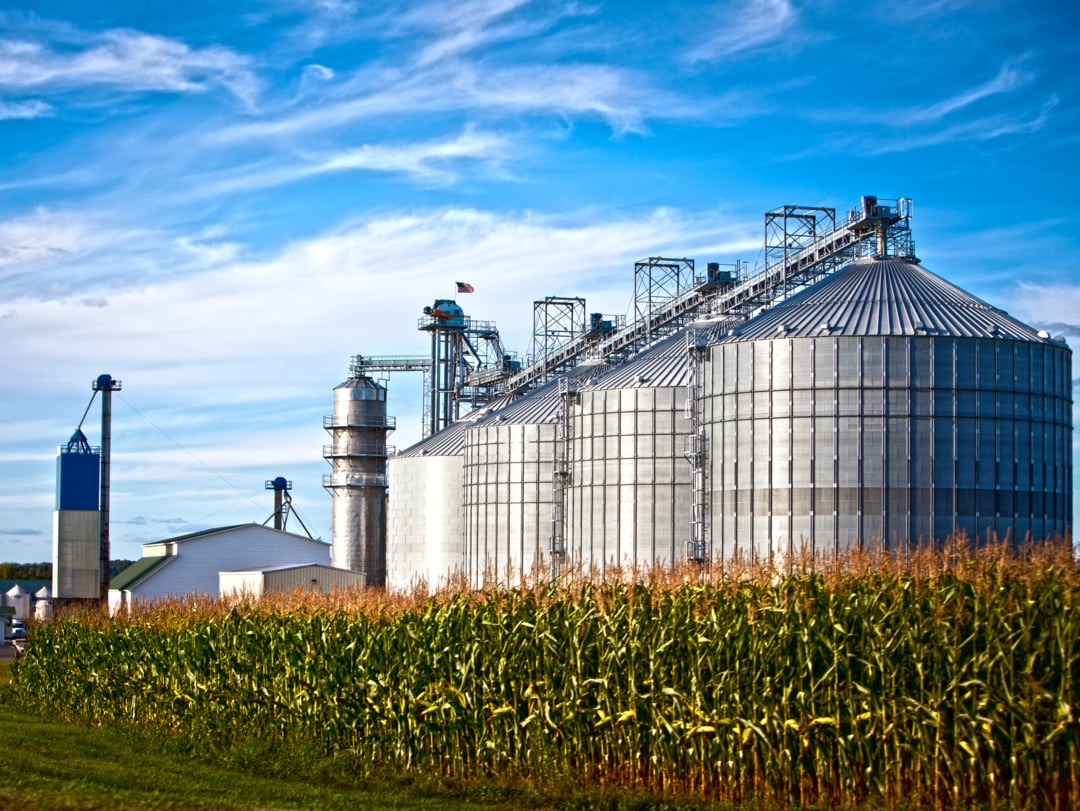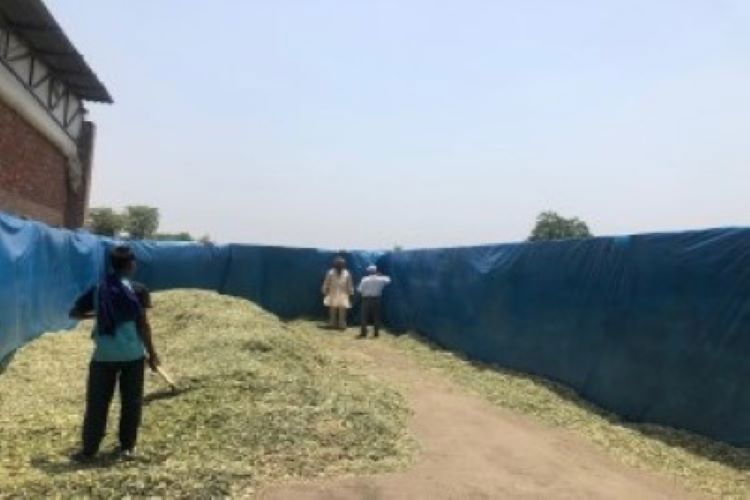
Grain storage techniques
Regarding grains and cereals, moulds that generate mycotoxins are a constant concern. About 80% of agricultural commodities are infected with mycotoxins, making them unsuitable for feed use. Moulds can be hosted in damaged kernels or broken grains and can impact grain quality, both in the field and during transport and storage. Only considering reductions in stored grain, losses during storage as well as mycotoxin contamination can be more than 30%.
Contamination prevention against the adverse effects of moulds should start in the field and continue through transport, storage and production. Scoring systems created by the USDA for corn and other grains are a helpful tool for evaluating quality factors, including grade, moisture, nutritional profile, physical quality and mycotoxin presence.
Grain storage requires careful planning, management and monitoring to prevent spoilage, maintain grain quality and ensure profitability. We defined eight main points that are important for ensuring a well-maintained storage facility:
1. Grain moisture control
Moisture is another critical factor in grain storage. Too much moisture can lead to mould growth, and spoilage, while too little moisture can result in drying out and loss of weight. Maintaining appropriate moisture levels in grain storage facilities requires proper grain aeration, temperature control, and moisture monitoring to prevent spoilage and ensure grain quality.
2. Storage temperature
Temperature control is crucial in grain storage to prevent grain spoilage and insect activity. If grains are stored in conditions that are too warm, it can accelerate the growth of insects and microorganisms, leading to spoilage. Conversely, if grains are stored in conditions that are too cold, it can result in condensation and mould growth. Proper insulation, ventilation, and temperature monitoring are essential to maintain the right temperature for grain storage.
3. Grain quality control
Grain quality is critical for marketability and profitability. Factors such as moisture content, foreign material, and damaged grains can affect the quality of stored grains. Regular quality monitoring, through sample analysis, helps to identify risks to allow effective grain preservation methods to be implemented.
4. Pest infestation
One of the biggest challenges in grain storage is preventing pest infestation. Insects, rodents, and other pests can damage grains, reducing their quality and market value. Controlling pests in grain storage facilities requires proper sanitation practices, regular monitoring, and the use of insecticides and rodenticides.
5. Storage capacity
Another challenge in grain storage is having enough storage capacity to accommodate the harvested grains. To properly aerate and ventilate silos, they cannot be overloaded with material. Inadequate storage capacity can result in spoilage or the need for alternative storage solutions, which may not be ideal for maintaining grain quality. Proper planning for storage capacity, including estimating grain volumes, and investing in adequate storage infrastructure, is essential to avoid storage challenges.
6. Safety and health risks
Grain storage facilities can also pose safety and health risks for workers. Hazards such as dust explosions, toxic gases, and working in confined spaces can result in accidents, injuries, or, in extreme cases, fatalities. Implementing proper safety protocols, providing adequate training to workers, and using appropriate safety equipment are essential to mitigate these risks.
7. Environmental factors
Extreme weather conditions like high humidity, floods, or storms, can impact grain storage. These factors can cause moisture increase, damage storage infrastructure, and affect grain quality. Implementing measures such as proper sealing, waterproofing, and disaster preparedness plans can help mitigate the impact of environmental factors on grain storage.
8. Regulations and compliance
Compliance with local, state, and federal regulations related to grain storage, such as environmental regulations, food safety standards, and building codes, can also be challenging. Keeping up-to-date with regulations and ensuring compliance can require additional effort, resources, and expertise.

